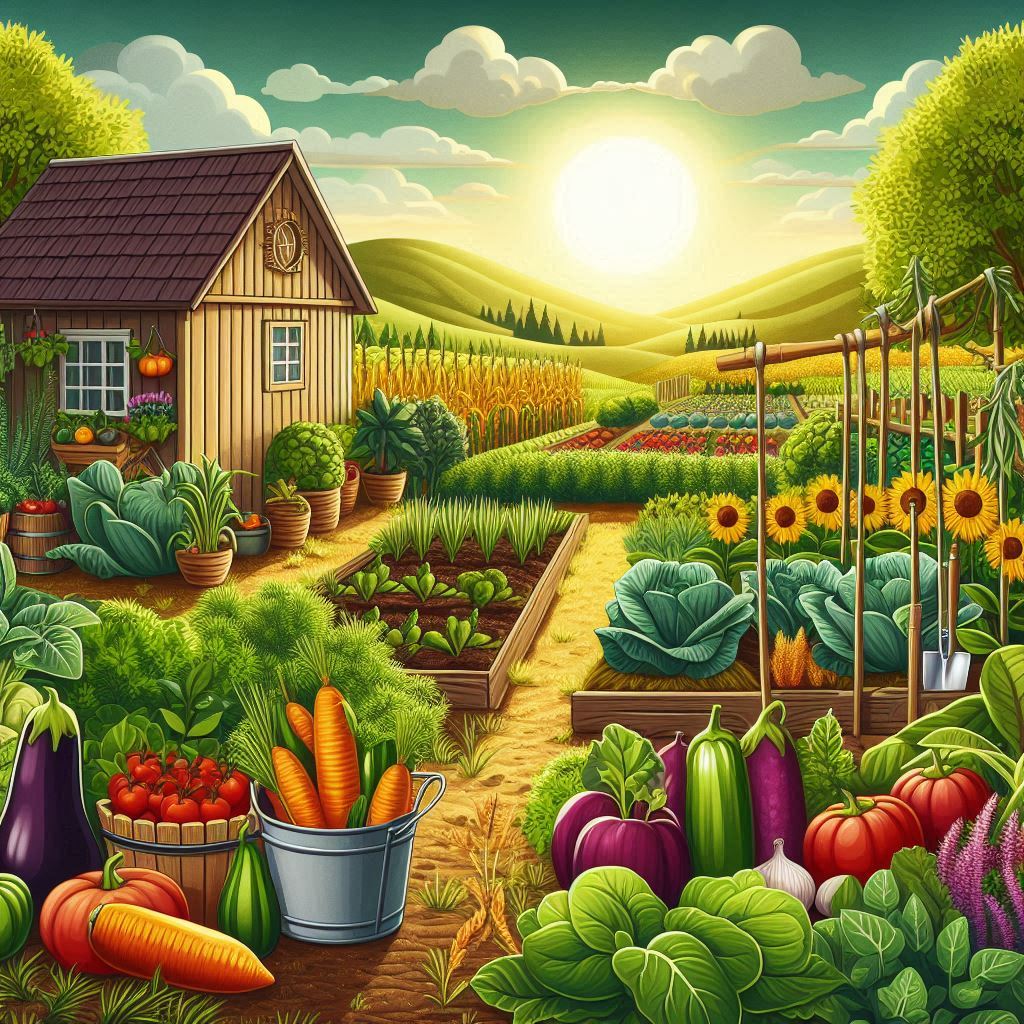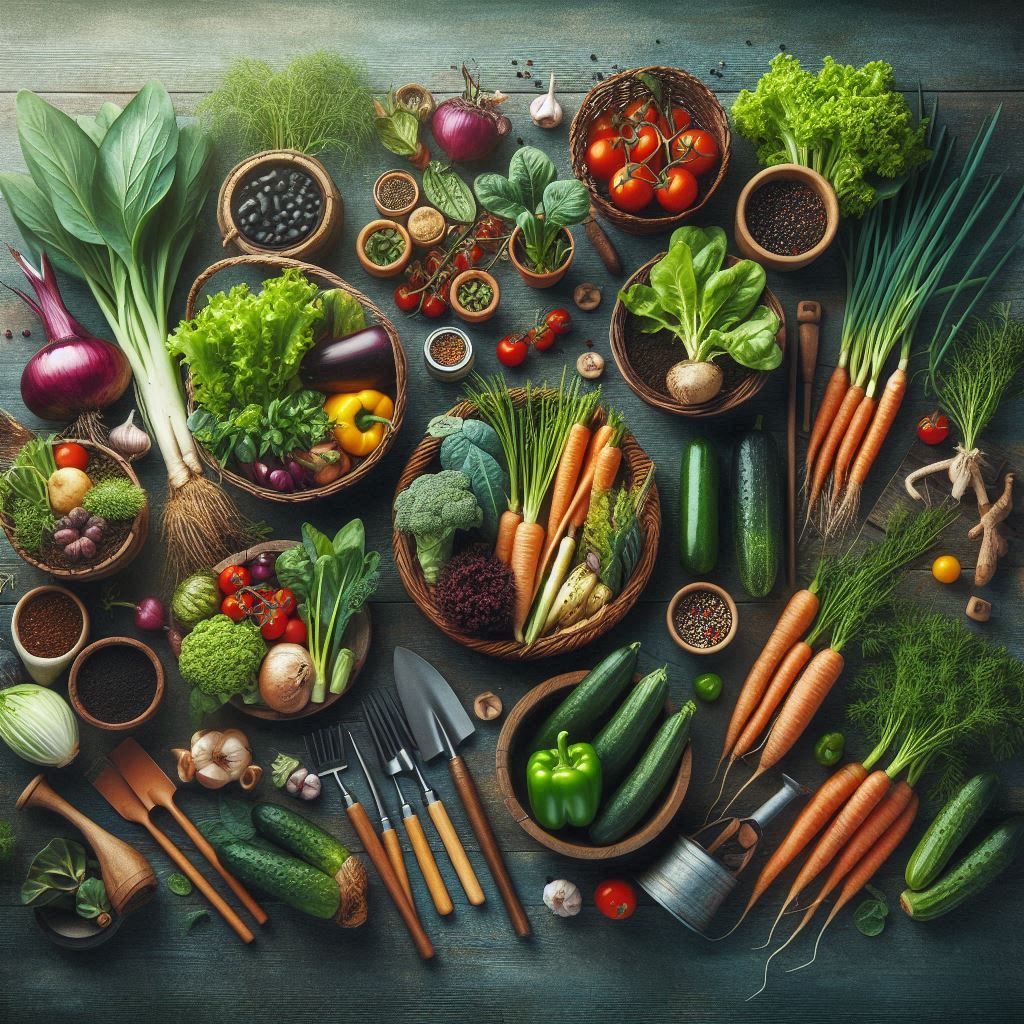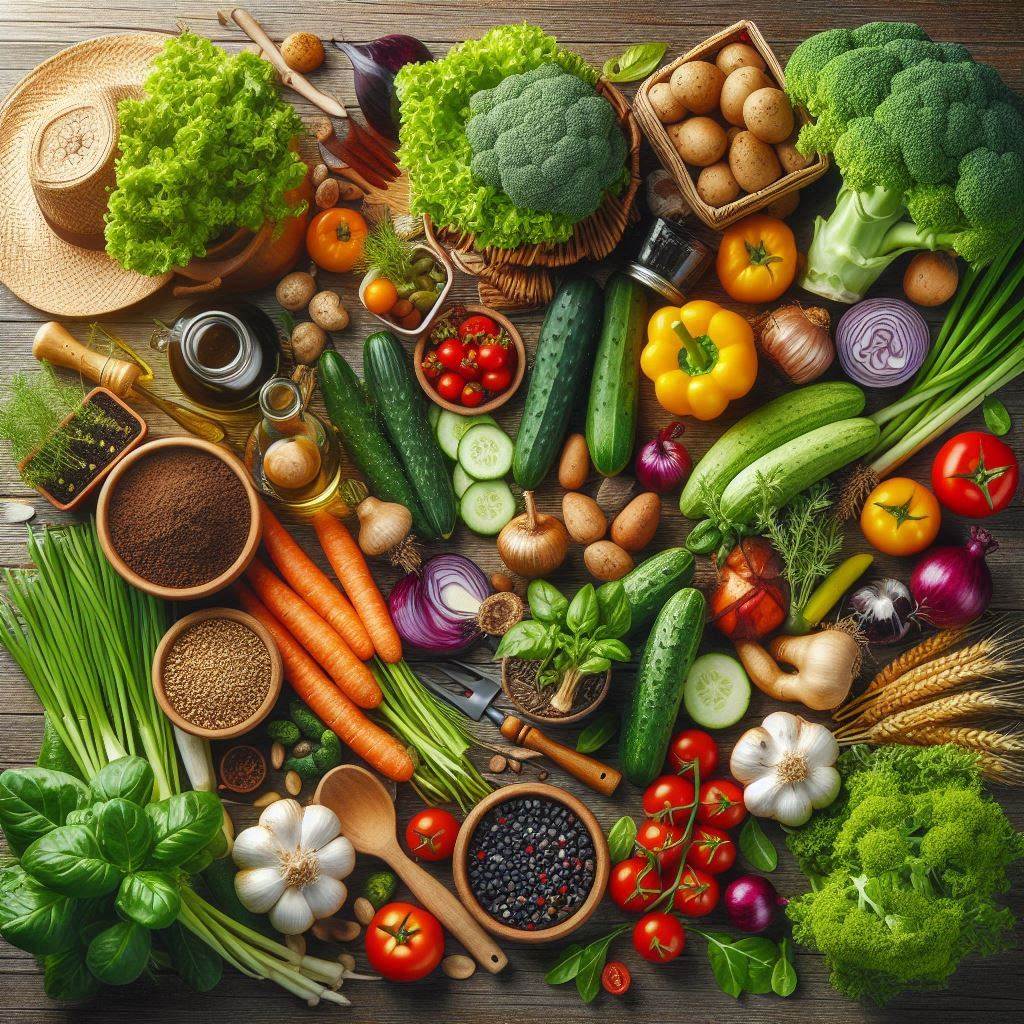Vegetable Gardening for Beginners: The Complete Guide
Welcome to the ultimate guide for beginners in vegetable gardening! Starting a vegetable garden can be a rewarding and fulfilling hobby, providing fresh produce and a connection to nature. In this guide, we’ll cover everything you need to know to get started, from selecting the right location to harvesting your crops. Whether you have a large backyard or a small balcony, you can grow your own vegetables and enjoy the fruits of your labor.
Choosing the Right Location
The first step in starting a vegetable garden is selecting the right location. Here are some key factors to consider:
- Sunlight: Most vegetables need at least 6-8 hours of direct sunlight per day. Choose a spot that receives plenty of sun.
- Soil Quality: Good soil is crucial for healthy plants. Test your soil for pH and nutrient levels, and amend it with compost or organic matter if needed.
- Water Access: Ensure your garden is close to a water source. Consistent watering is essential for vegetable growth.
- Space: Consider the space available. Even small areas can be used effectively with container gardening or vertical gardening techniques.
Planning Your Garden
Before planting, it’s important to plan your garden layout. Here are some tips to get started:
- Choose Your Vegetables: Select vegetables that you and your family enjoy eating. Consider the climate and growing season in your area.
- Companion Planting: Some plants grow better together. For example, tomatoes and basil are great companions. Research companion planting to optimize your garden.
- Succession Planting: Plan for multiple harvests by planting crops in succession. This ensures a continuous supply of fresh produce.
- Garden Layout: Arrange your plants to maximize space and light exposure. Consider raised beds, containers, or traditional rows.
Preparing the Soil
Healthy soil is the foundation of a successful garden. Follow these steps to prepare your soil:
- Test Your Soil: Use a soil test kit to check pH and nutrient levels. Most vegetables prefer a slightly acidic to neutral pH (6.0-7.0).
- Amend the Soil: Add compost, aged manure, or organic matter to improve soil structure and fertility. Work these amendments into the soil to a depth of at least 6-8 inches.
- Mulch: Apply a layer of mulch to retain moisture, suppress weeds, and regulate soil temperature.
Planting Your Vegetables
Now it’s time to plant your vegetables. Here’s a step-by-step guide:
- Start Seeds Indoors: For a head start, begin seeds indoors 4-6 weeks before the last frost date. Use seed trays or small pots with seed-starting mix.
- Transplanting: Once seedlings have grown strong enough and the danger of frost has passed, transplant them into the garden. Handle seedlings gently to avoid damaging roots.
- Direct Sowing: Some vegetables, like carrots and radishes, are best sown directly into the garden. Follow seed packet instructions for spacing and depth.
Caring for Your Garden
Proper care is essential for a thriving vegetable garden. Here are some maintenance tips:
- Watering: Water your garden consistently, aiming for about 1 inch of water per week. Water early in the day to reduce evaporation.
- Fertilizing: Feed your plants with a balanced fertilizer or compost tea every few weeks. Follow package instructions for application rates.
- Weeding: Keep your garden weed-free to reduce competition for nutrients and water. Mulching can help suppress weed growth.
- Pest Control: Monitor for pests and diseases. Use organic methods like neem oil, insecticidal soap, or handpicking to manage problems.

Harvesting Your Vegetables
The best part of gardening is enjoying your fresh, homegrown produce. Here’s how to harvest:
- Timing: Harvest vegetables at their peak ripeness for the best flavor and nutrition. Refer to seed packets or gardening guides for specific harvest times.
- Techniques: Use sharp scissors or pruners to harvest vegetables. For root crops, gently lift them from the soil.
- Storage: Store harvested vegetables properly to extend their shelf life. Some, like tomatoes, should be kept at room temperature, while others, like carrots, can be refrigerated.
Common Beginner Mistakes and How to Avoid Them
Even experienced gardeners make mistakes, but beginners can avoid common pitfalls with these tips:
- Overwatering or Underwatering: Consistent watering is crucial. Check soil moisture regularly.
- Planting Too Early or Too Late: Follow local guidelines for planting times based on your climate zone.
- Ignoring Soil Health: Regularly amend soil with compost to maintain fertility and structure.
Best Vegetables for Beginners
Certain vegetables are easier to grow and are perfect for beginners:
- Tomatoes: Versatile and rewarding, tomatoes are a favorite for new gardeners.
- Lettuce: Quick to grow and can be harvested multiple times in a season.
- Radishes: Fast-growing and perfect for immediate results.
Seasonal Gardening Tips
Adapt your gardening practices to the season for optimal growth:
- Spring: Start seeds indoors and prepare garden beds.
- Summer: Focus on watering and pest control.
- Fall: Harvest remaining crops and prepare the garden for winter.
- Winter: Plan for the next growing season and start indoor gardening projects.
Organic vs. Conventional Gardening
Understand the differences between organic and conventional gardening to make informed decisions:
- Organic Gardening: Uses natural methods and avoids synthetic chemicals. Benefits include improved soil health and environmentally friendly practices.
- Conventional Gardening: May use synthetic fertilizers and pesticides. Often results in faster growth but can impact soil health and the environment.
Gardening Tools and Equipment
Essential tools can make your gardening experience smoother:
- Hand Trowel: Perfect for planting and transplanting.
- Pruning Shears: Necessary for trimming plants and harvesting vegetables.
- Watering Can or Hose: Ensures plants receive adequate water.
- Gardening Gloves: Protect your hands from thorns and dirt.
Encouraging Wildlife and Beneficial Insects
Creating a garden that attracts beneficial insects and wildlife can improve plant health and yields:
- Plant Flowers: Attract pollinators like bees and butterflies.
- Create Habitats: Provide shelter for beneficial insects like ladybugs and predatory beetles.
- Avoid Pesticides: Use organic pest control methods to protect beneficial insects.

Conclusion
Starting a vegetable garden can be a fun and rewarding experience, even for beginners. By following this complete guide, you’ll be well on your way to growing your own fresh, delicious vegetables. Remember, gardening is a learning process, so don’t be afraid to experiment and learn from your experiences. Happy gardening!




